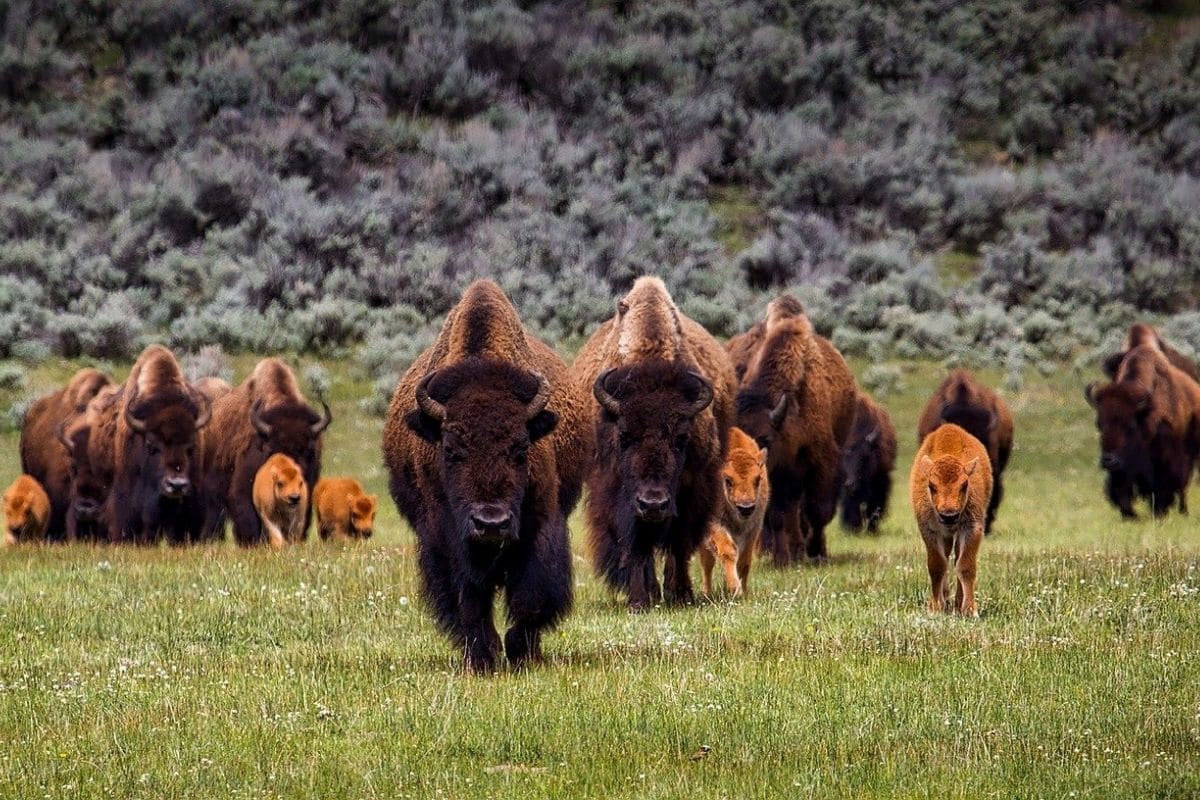
Putting large mammals out in the Arctic to slow climate change makes little sense, according to researchers.
Global warming is thawing permafrost; the previously permanently frozen soil that we mainly know from the Arctic. This causes greenhouse gases – including carbon and methane – to leak into the atmosphere, which in turn amplifies climate change. To prevent further permafrost thaw, some scientists have suggested releasing large mammals, such as bison and horses, into the vulnerable areas. But does that actually make sense?
shrubs
To understand this, let’s first go back in time. About 14,000 years ago, towards the end of the last ice age, grassy landscapes increasingly gave way to scrub. At the same time, several iconic mammal species – including the famed woolly mammoth – became extinct. Some scientists therefore suspect that the disappearance of these mammals led to the growth of shrubs. Because suddenly there were no more animals that trampled the vegetation and stamped nutrients back into the ground.
Releasing mammals
Today, with strong Arctic warming, we also see an increase in scrubland in northern tundra areas. Some scientists argue that reintroducing large mammals could reverse the trend of increasing shrub cover. In addition, it is expected that this will allow carbon to remain stored in the ground. This is because low-growing vegetation exposes the soil to colder conditions than thickets. And so the soil and the harmful greenhouse gases it contains remain frozen.
Opposing Hypotheses
It would mean that large mammals could reduce the melting of permafrost and the greenhouse gases that are pumped into the atmosphere during this process. The question is, however, whether this plan actually works. Opponents argue that it was not the disappearance of mammals that led to the increase in shrubbery, but that it is the other way around: climate change caused a change in vegetation, causing several animals to be killed. Researchers decided to get to the bottom of it. “In our study, we explored two opposing hypotheses,” said study researcher Mary Edwards. “Did the animals disappear because of the advance of bushes? Or were there more bushes because there were no more large mammals?”
Study
The researchers analyzed fossil pollen, which has been preserved for thousands of years in lake sediments in Alaska and Yukon. The team was able to pinpoint the precise moment at which shrubs became more dominant in this region. In addition, they estimated the changing population size of the numbers of horses, bison, mammoths and moose.
Climate change
The research provides new insight into why large mammals became extinct towards the end of the Ice Age. The results show that a warming climate caused the change in vegetation. This is evidenced by the fact that about 14,000 years ago in Alaska and Yukon, various thickets became increasingly dominant, while large grazing mammals were still abundant in the landscape at the time. This rapid expansion of shrubbery subsequently created an unsuitable habitat for many animals – including the ill-fated mammoth – who ultimately paid for these changes with their lives.
Little sense
In short, the findings suggest that climate change was thus the culprit for the increase in shrubbery thousands of years ago. And so spawning large mammals in the Arctic to slow climate change makes little sense, according to researchers. “The hypothesis that megafauna reintroduction may prevent or delay permafrost thaw is supported by the idea that Pleistocene megafauna played an important role in ecosystem conservation during the Ice Age,” explains Benjamin Gaglioti. “But contrary to this prediction, our results show that ecosystems at high latitudes were sensitive to warming. It means that reintroducing large mammals today will do little to protect ecosystems from human-induced climate change.”
So, unfortunately, grazing mammals will not be able to reduce the melting permafrost – and thus greenhouse gas emissions. In any case, shrubs will continue to spread across the landscape due to climate change. “Even mammoths couldn’t change it,” said researcher Duane Froese. “Once again, it has been proven that the climate is the main driver.”
Source material:
“ Rewilding the Arctic with mammals likely to be ineffective in slowing climate change impact – University of Southampton (via EurekAlert)
Image at the top of this article: David Mark via Pixabay